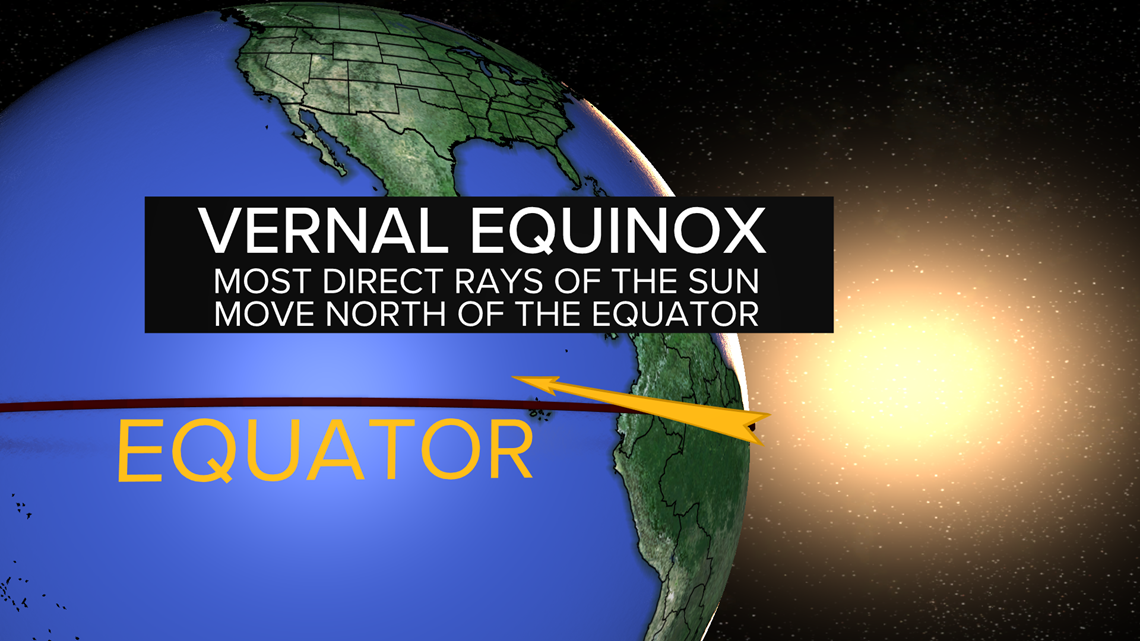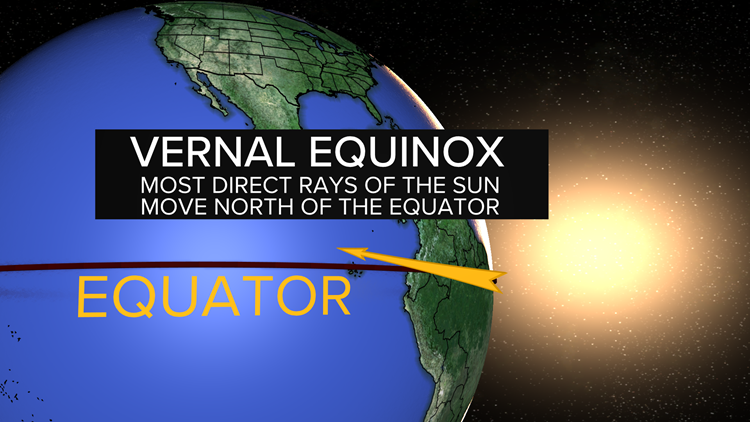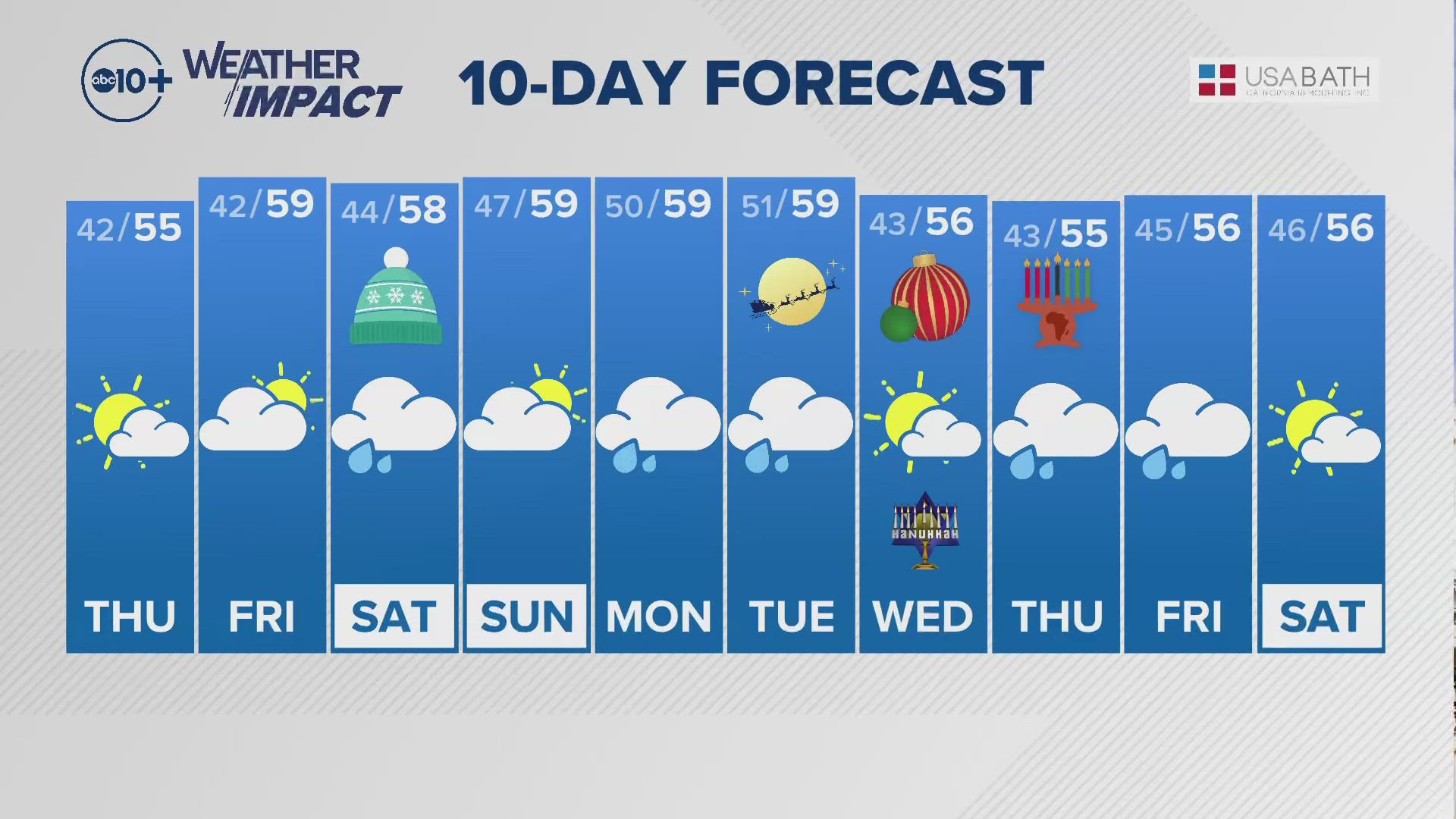SACRAMENTO, Calif. — We traditionally mark the beginning of the spring season in the Northern Hemisphere around March 20 each year. The date is dependent on when the sun crosses the celestial equator and we see equal hours of daylight and night, called the vernal equinox.
This year, that will happen on March 20 at 2:37 a.m. Pacific Daylight Time.


Places that are north of the equator will have this date slightly adjusted.
In fact, Sacramento’s vernal equinox happens on March 16 and 17 this year. Those are the closest days of seeing equal hours of day and night.
The sunrise and sunset will happen around 7:14-7:15 a.m. and 7:14-7:15 p.m. each day. After these dates, daylight hours surpass nighttime hours.
There are many astronomical observations we see in the Northern Hemisphere on the equinox. The sun will rise due east and set due west no matter where we live on Earth. The sun will also appear directly overhead as seen from the Earth’s equator at noon.
Each day as we move closer to the summer solstice, the sun will set a bit farther to the north. Meanwhile, the Southern Hemisphere is seeing the opposite happen.


The Earth is constantly moving around the sun on its 23 ½ ° tilt. This results in two equinoxes a year – vernal and autumnal – and two solstices a year – winter and summer.
The summer solstice happens June 20, 2021 at 8:31 p.m.
WATCH NEXT: Moon, Mars, Earth align before dawn | Geek Lab
In today's Geek Lab, Carley Gomez was in Elk Grove with a cosmic photographer to catch the rare Moon-Mars occultation event before dawn on Tuesday.




















